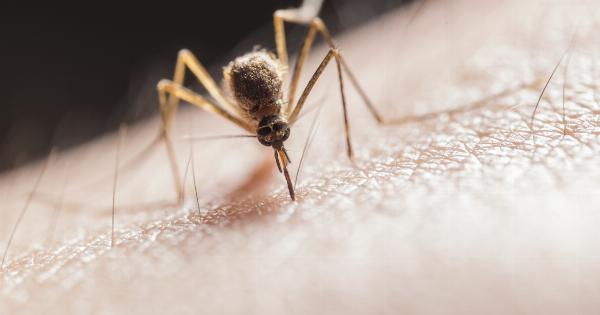Malaria, a life-threatening disease transmitted through mosquito bites, poses a significant global health burden.
According to the World Health Organization (WHO), there were an estimated 229 million cases of malaria and 409,000 deaths in 2019 alone, with a disproportionate impact on sub-Saharan Africa.
Conventional malaria control strategies, such as bed nets and insecticides, have demonstrated some effectiveness in reducing the transmission of the disease.
However, the rapid evolution of resistance in mosquitoes and parasites threatens the efficacy of these approaches. To combat this challenge, scientists have turned to genetically modified mosquitoes as a potential solution.
The Science Behind Genetically Modified Mosquitoes
Genetically modified mosquitoes are created through various techniques that alter the mosquito’s genetic makeup.
One prominent technique involves the use of gene editing technology, such as CRISPR-Cas9, to introduce specific genetic modifications.
The primary objective of genetically modifying mosquitoes is to either reduce their ability to transmit malaria parasites or reduce mosquito populations altogether.
Scientists focus on modifying the genes responsible for key aspects of mosquito biology, such as their ability to reproduce, feed on human blood, or resist parasites.
Targeting the Anopheles Mosquito
The Anopheles mosquito plays a vital role in malaria transmission, particularly the species Anopheles gambiae, which is responsible for most cases of the disease in Africa.
By genetically modifying these mosquitoes, scientists hope to break the cycle of malaria transmission and reduce disease prevalence.
Inhibiting Malaria Transmission
One promising approach involves genetically modifying mosquitoes to make them resistant to the malaria parasite. Scientists aim to alter the genes responsible for immune responses in mosquitoes, making them better equipped to combat malaria infections.
Additionally, researchers have explored genetic modifications that interfere with the mosquito’s ability to carry the malaria parasite.
By altering genes related to parasite development and survival within the mosquito, scientists hope to significantly reduce the transmission of malaria to humans.
Reducing Mosquito Populations
Another strategy involves genetically modifying mosquitoes to limit their reproductive capabilities, thereby reducing mosquito populations. One approach is the introduction of a self-limiting gene into male mosquitoes.
Male mosquitoes carrying the self-limiting gene are released into the environment, where they mate with wild female mosquitoes.
The offspring resulting from these mating interactions inherit the self-limiting gene, which causes them to die before reaching adulthood, effectively reducing the overall mosquito population over time.
The Challenges and Concerns
The use of genetically modified mosquitoes to combat malaria is not without challenges and concerns. Critics argue that the release of modified mosquitoes into the environment could have unintended ecological consequences.
The potential disruption to ecosystems and unknown long-term effects of altering mosquito populations warrant careful consideration.
Regulatory frameworks for the deployment of genetically modified mosquitoes also need to be established to ensure their safe and effective use.
Public acceptance and engagement are crucial for the successful implementation of this technology, as community concerns and perceptions can significantly influence project outcomes.
Ongoing Research and Future Outlook
Despite these challenges, ongoing research and development efforts continue to explore the potential of genetically modified mosquitoes as a tool for malaria control.
Several pilot projects have been conducted in different regions to assess the feasibility and effectiveness of these interventions.
For example, the genetically modified mosquito strain known as “OX513A” has undergone trials in countries like Brazil, Malaysia, and the Cayman Islands.
The results have shown promising reductions in mosquito populations and, consequently, a decrease in malaria transmission rates.
Continued investment in research and development is essential to improve the efficacy and safety of genetically modified mosquitoes.
Researchers are looking for ways to enhance the precision and efficiency of genetic modifications while addressing concerns related to ecological impacts and public acceptance.
Potential Impact on Malaria Prevention
If genetically modified mosquitoes prove to be safe and effective, they could revolutionize malaria control strategies by offering sustainable, long-term solutions.
Unlike conventional methods, genetically modified mosquitoes have the potential to target mosquito populations directly and reduce their ability to transmit diseases like malaria.
By combining these genetically modified mosquitoes with existing control measures, such as bed nets and antimalarial drugs, the global community may be able to make substantial progress in reducing the burden of malaria worldwide.
Conclusion
Malaria remains a formidable global health issue, and innovative approaches are necessary to combat this deadly disease.
Genetically modified mosquitoes present a promising tool in the fight against malaria, offering new possibilities to reduce mosquito populations and inhibit the transmission of the disease.
While challenges and concerns surrounding their implementation persist, ongoing research and efforts to develop safe and effective genetically modified mosquitoes are essential.
The potential impact of these modified insects on malaria prevention and control is significant, providing hope for a future where malaria is no longer a major public health threat.



























